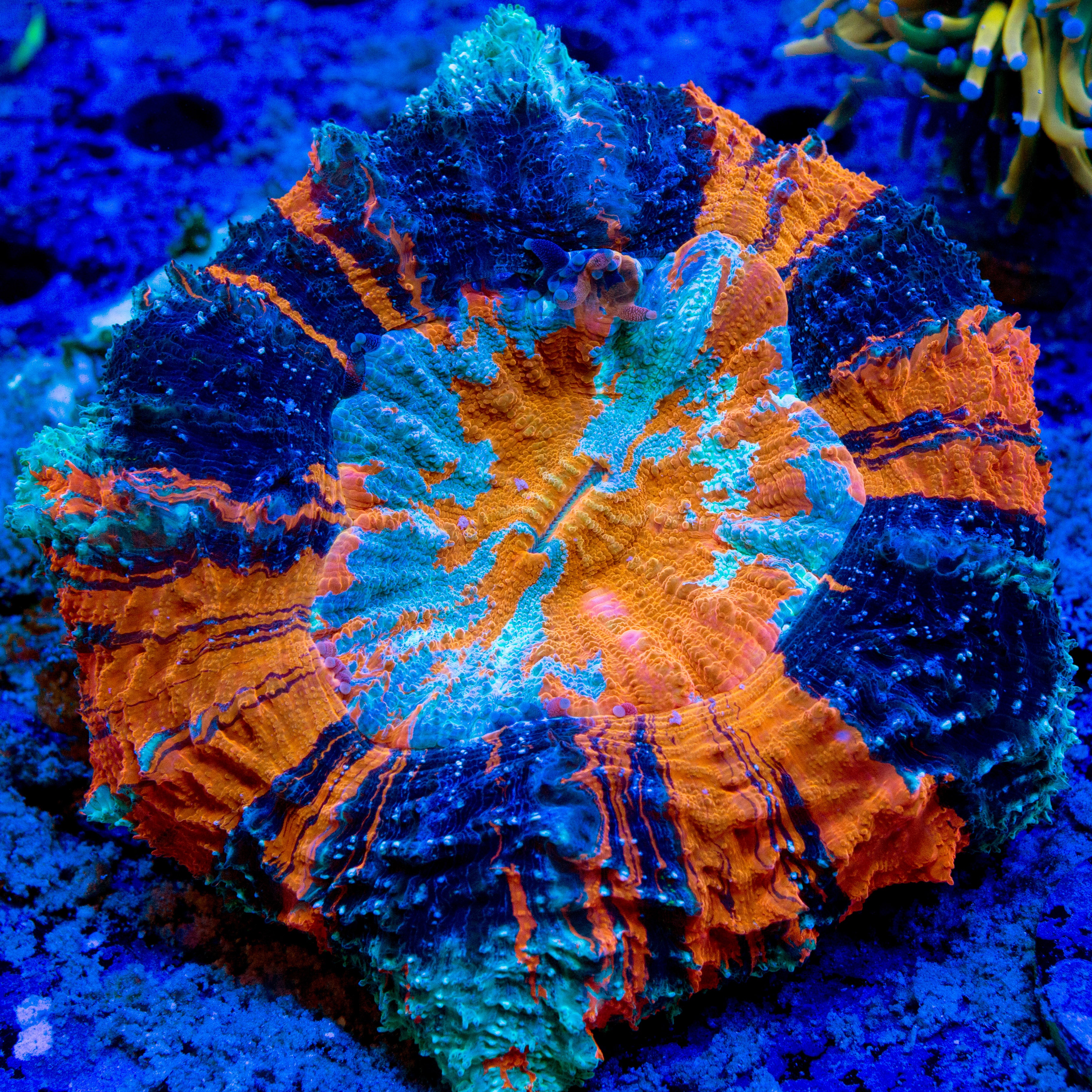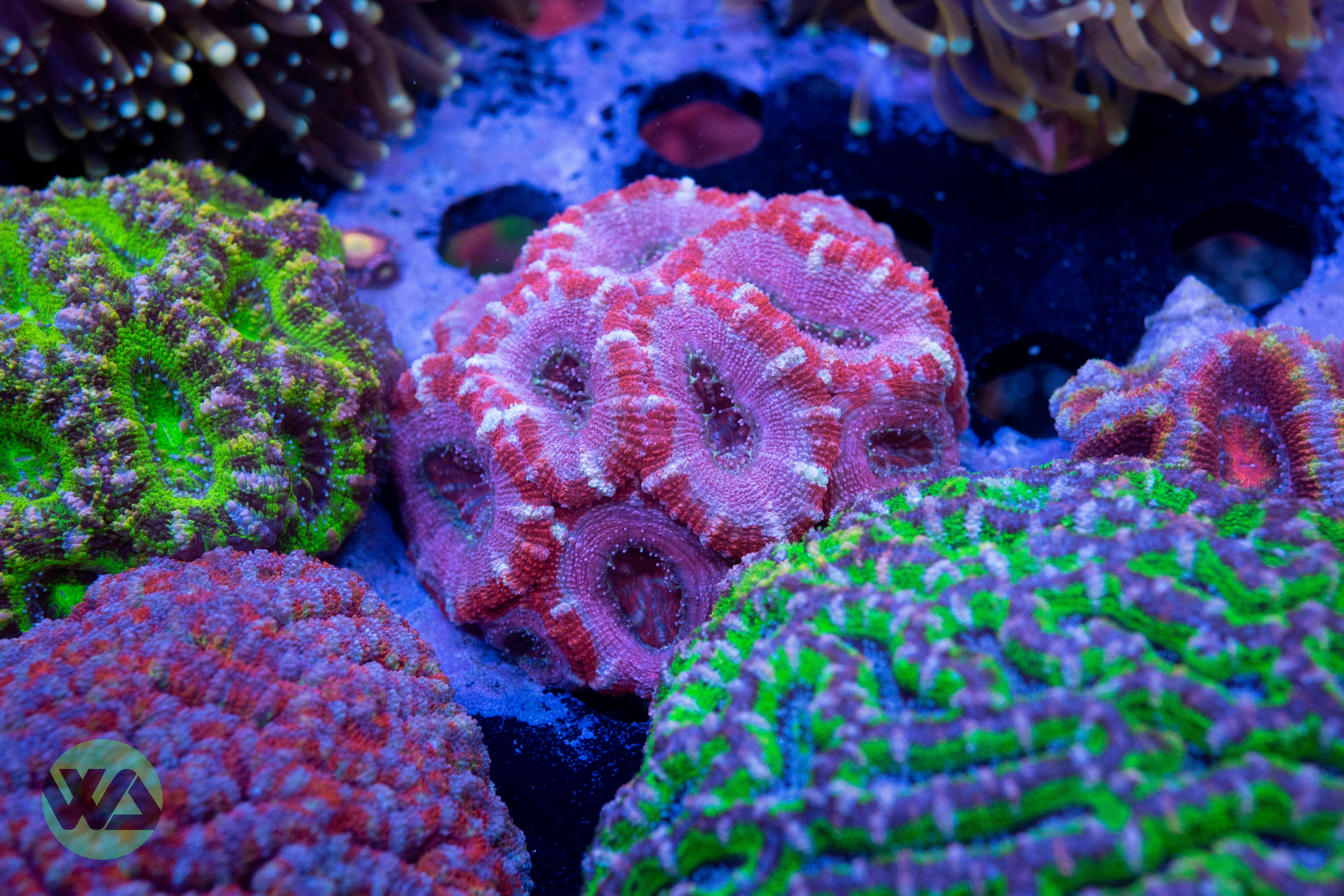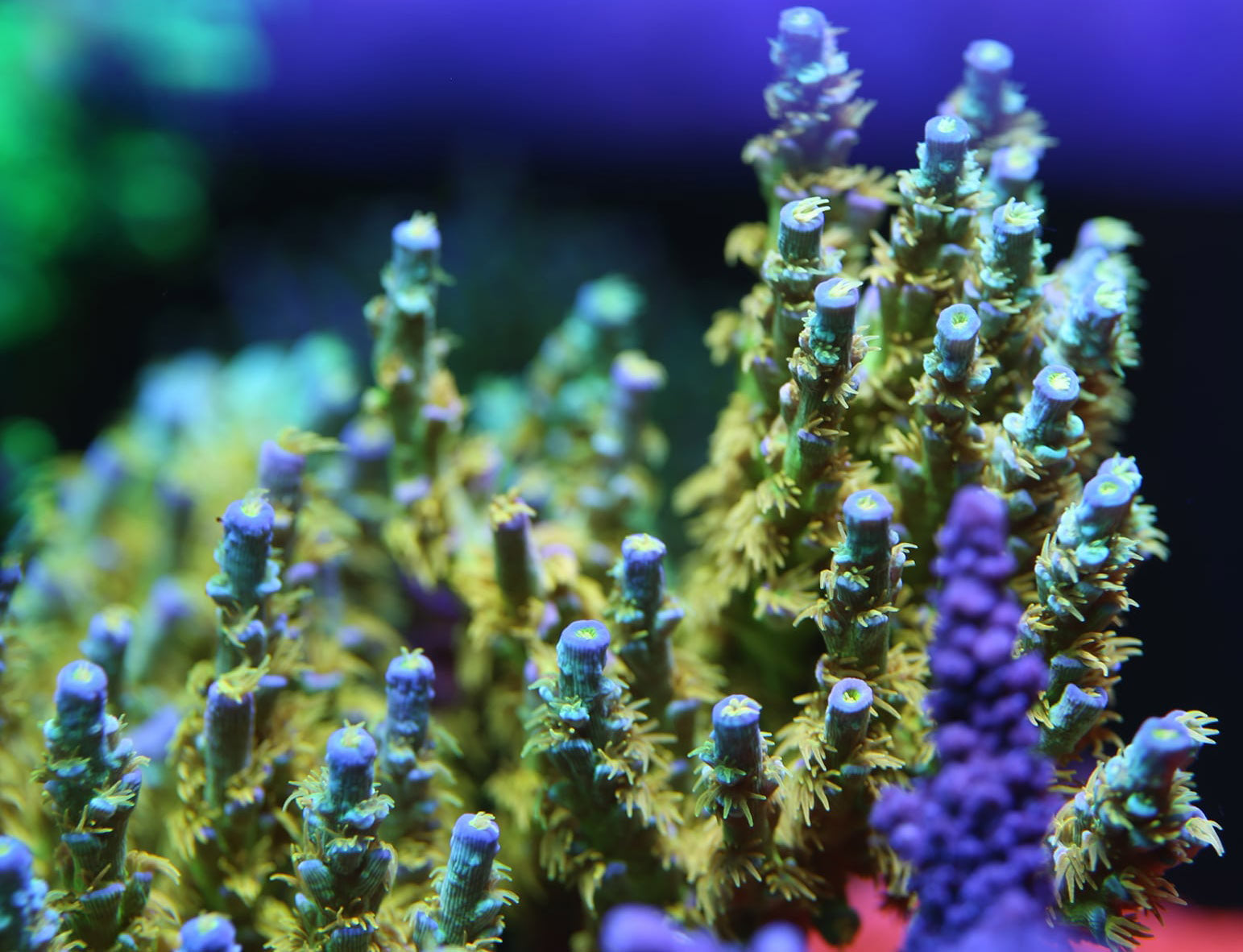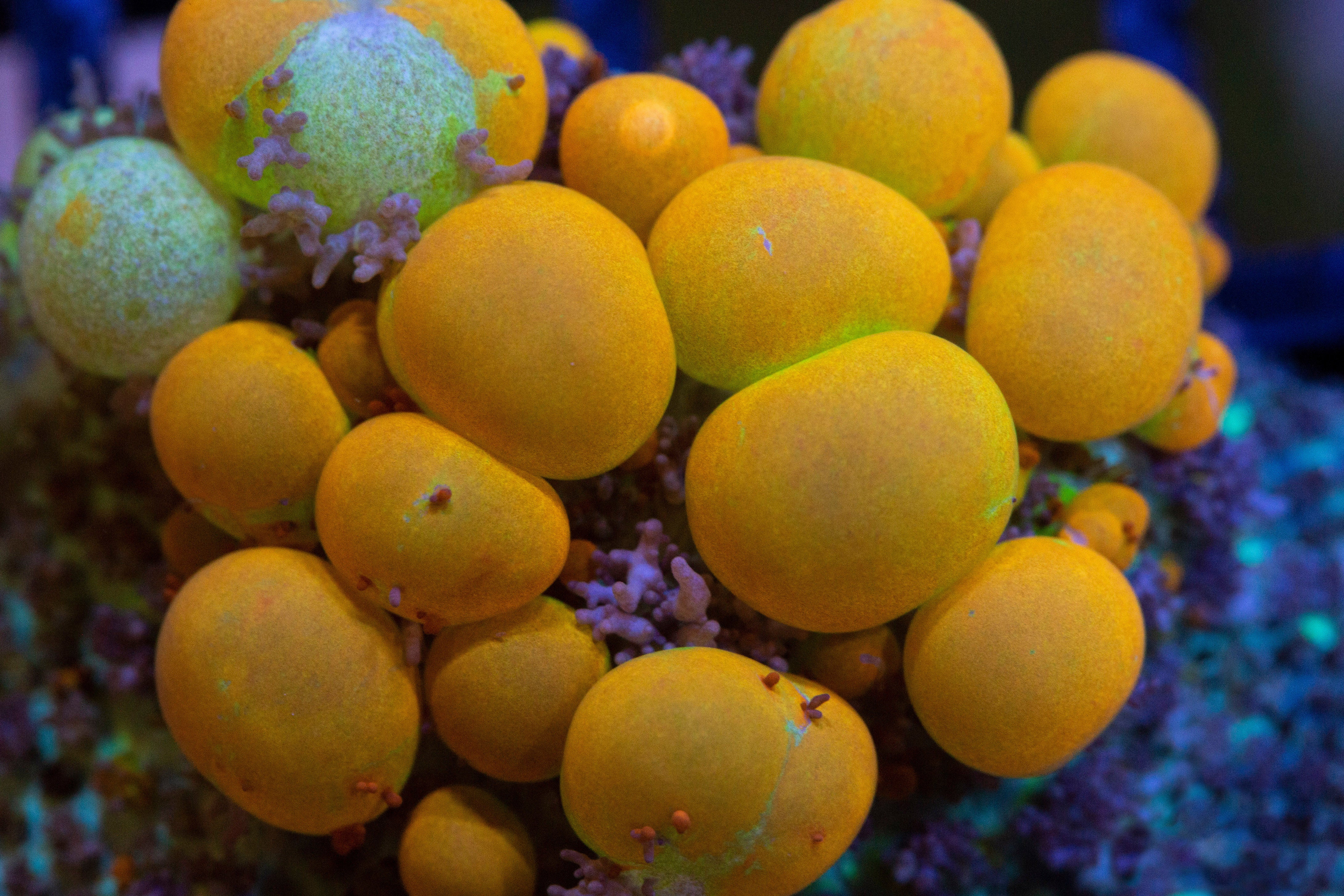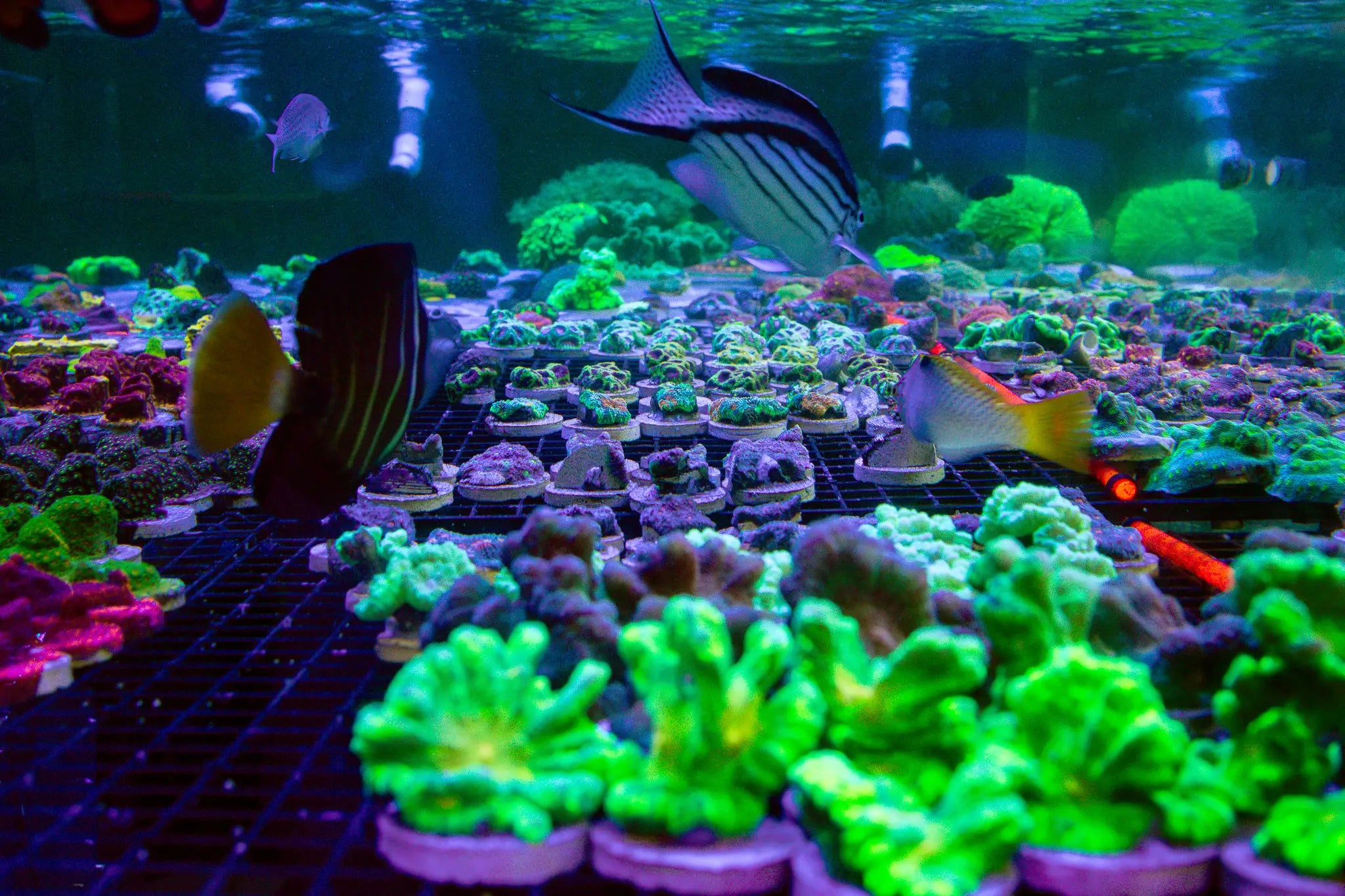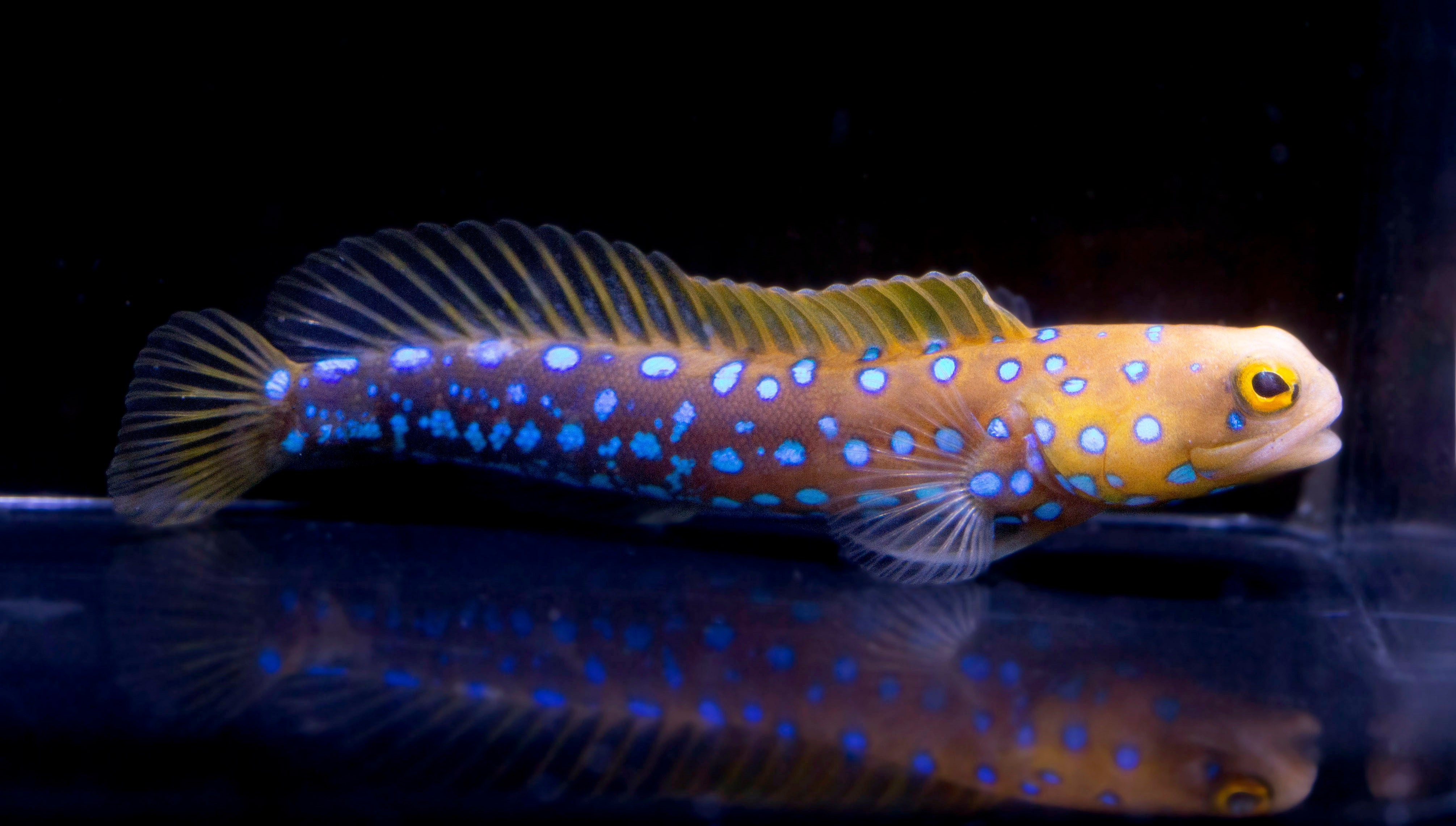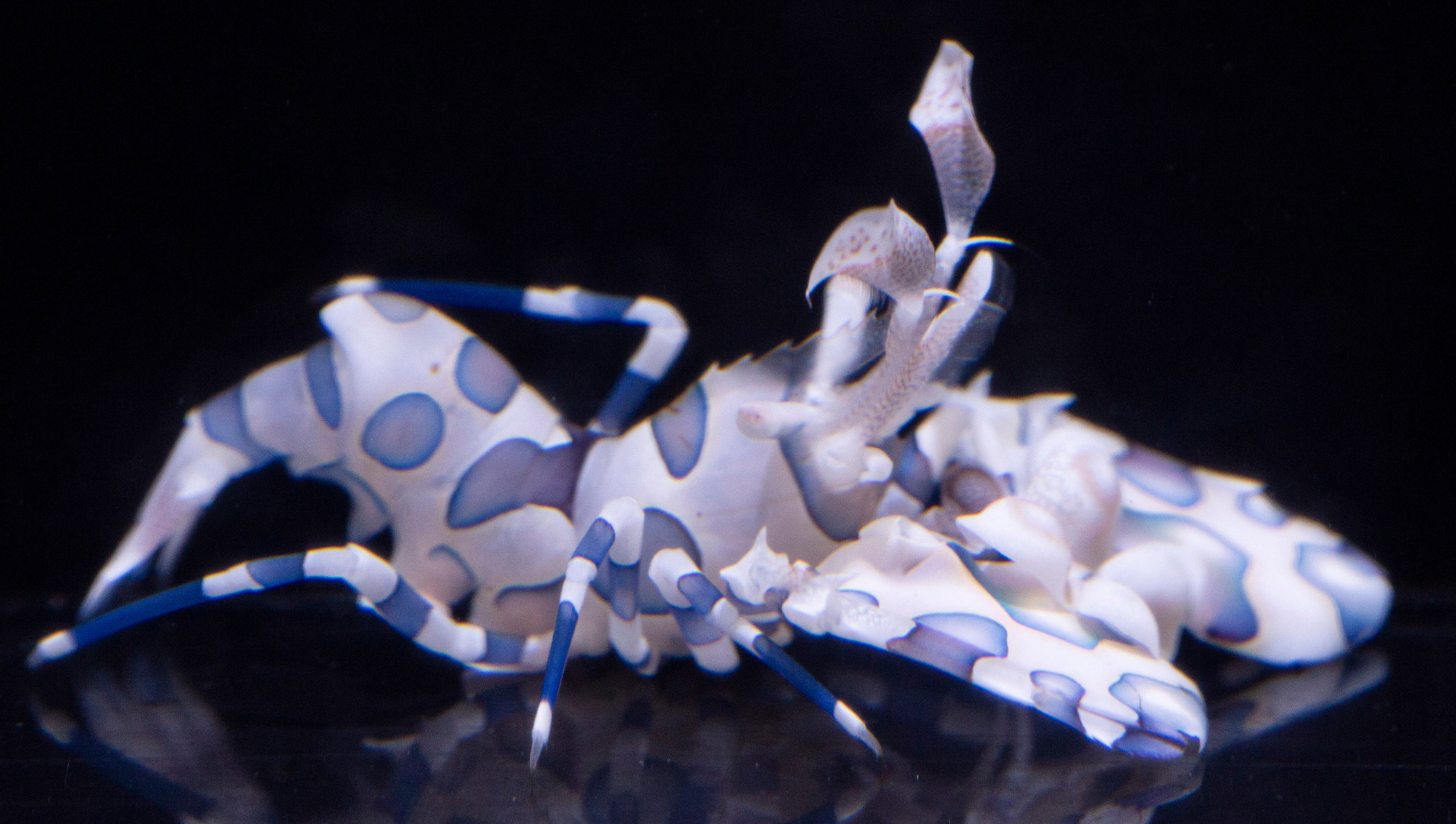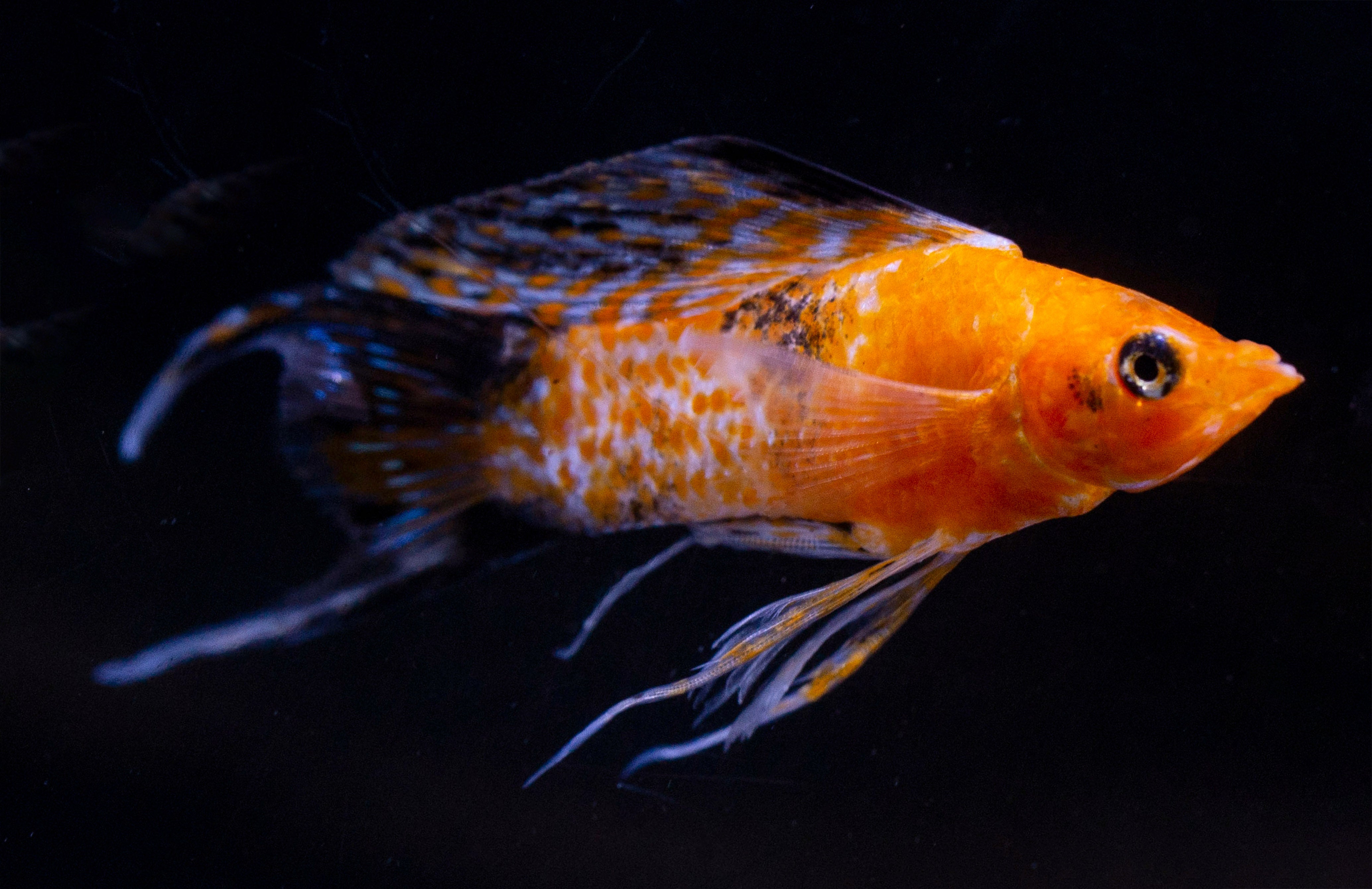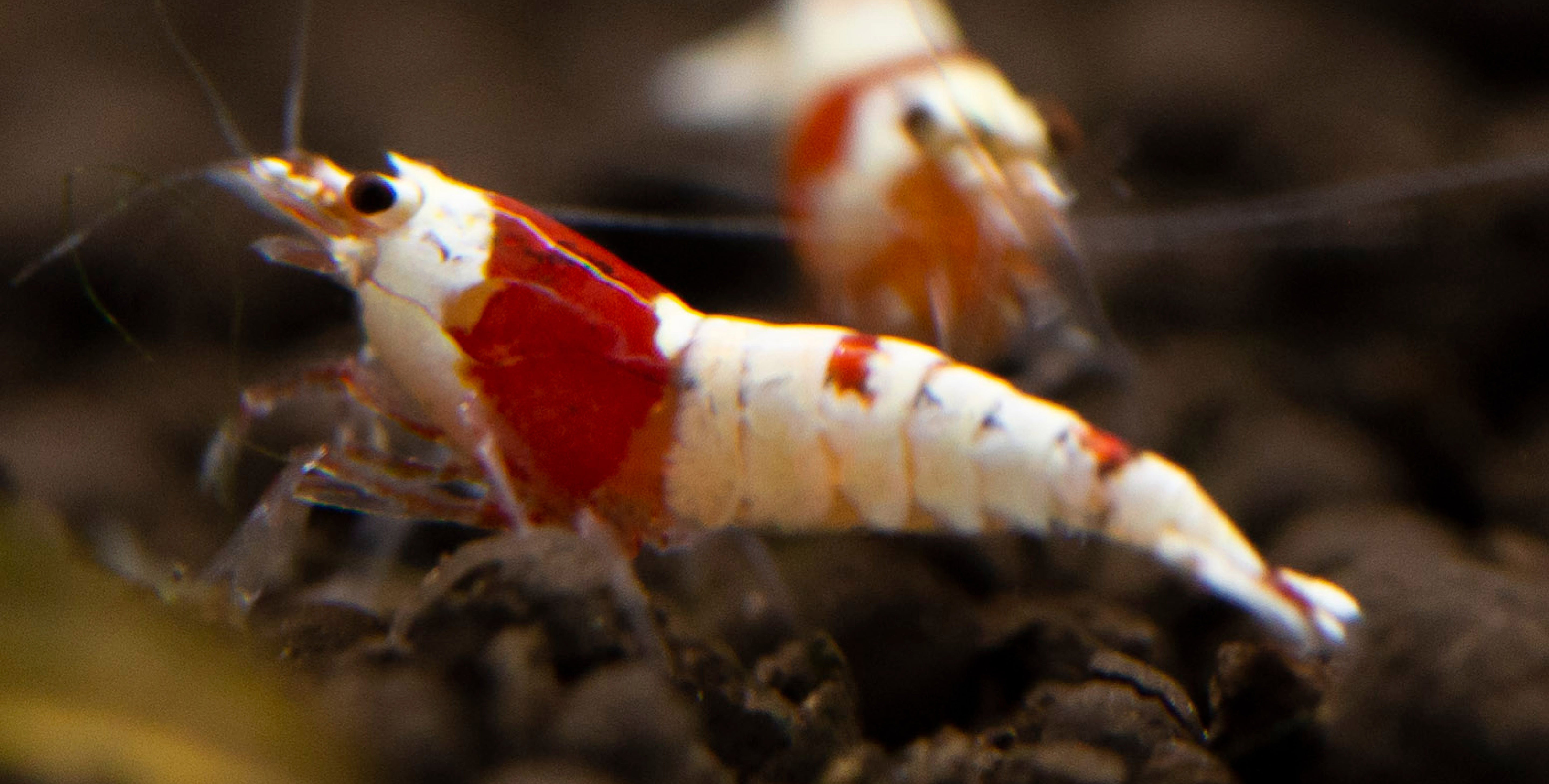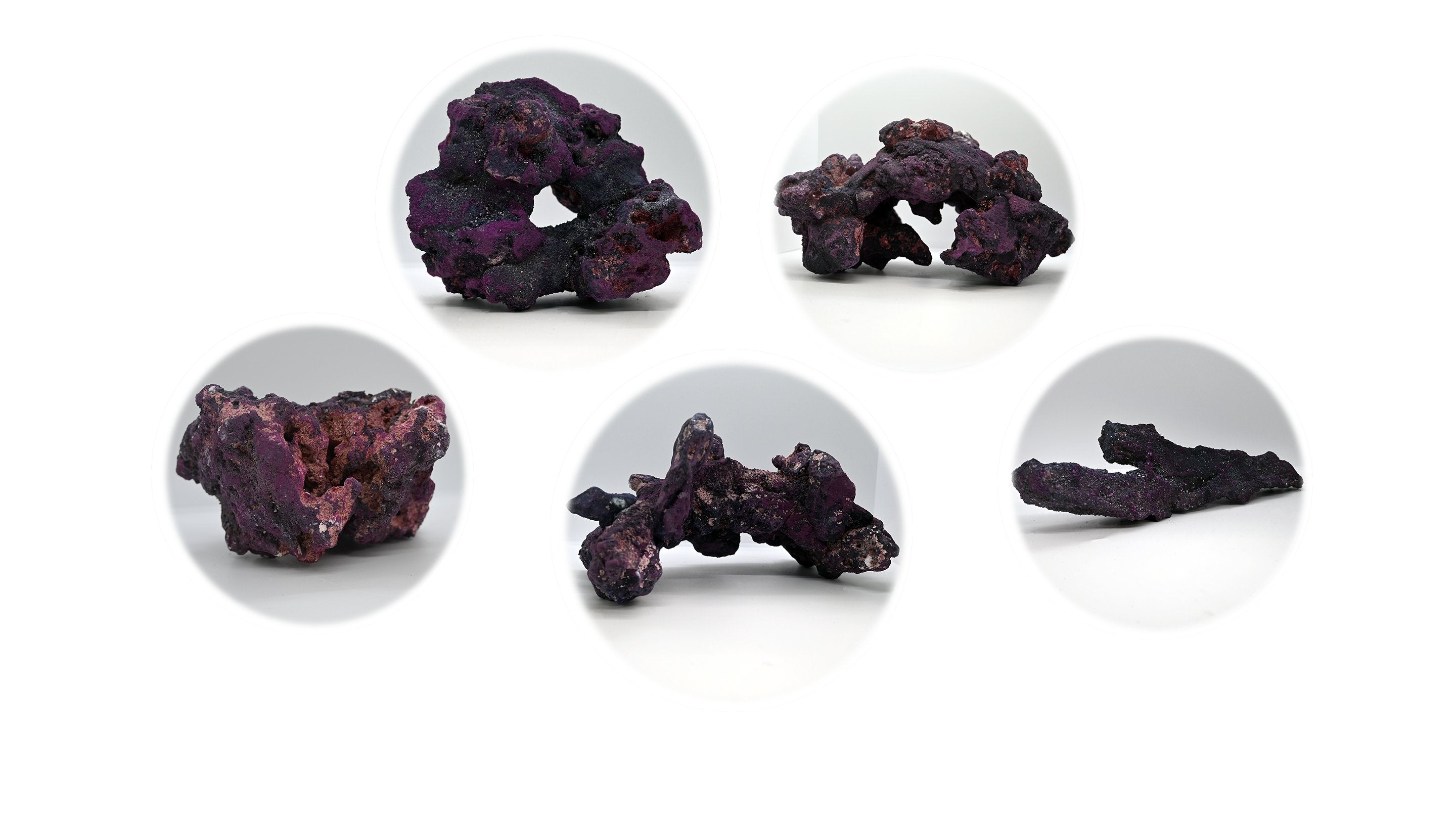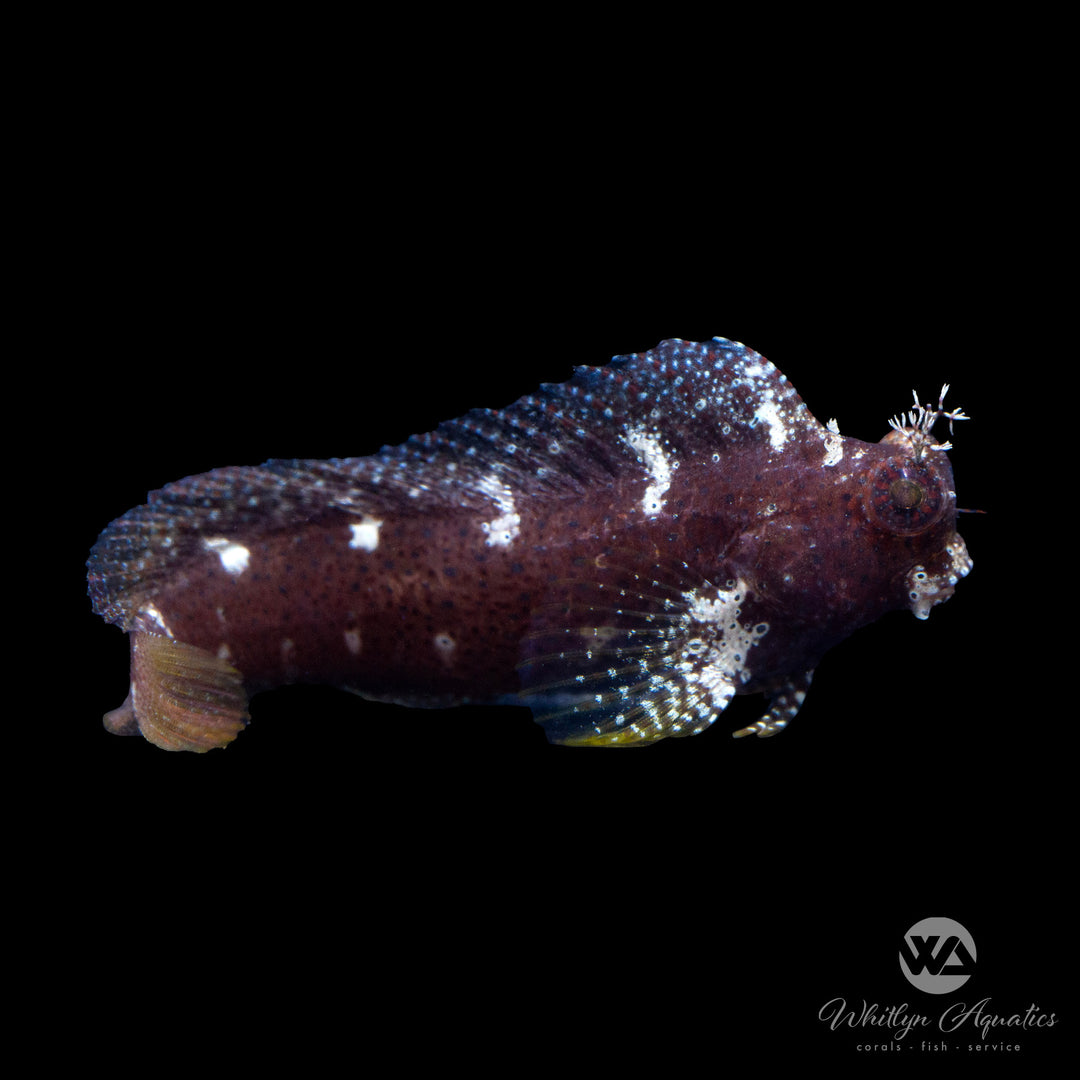Starry Blenny - Salarias ramosus
- In stock, ready to ship
- Backordered, shipping soon
The Starry Blenny (Salarias ramosus) is a striking and charming species of blenny, known for its unique appearance and playful nature. Recognized by its vibrant coloration and “starry” markings, it makes a fantastic addition to reef tanks and marine aquariums, especially for aquarists who appreciate a peaceful, reef-safe bottom dweller with interesting behaviors.
Description:
• Common Name: Starry Blenny
• Scientific Name: Salarias ramosus
• Family: Blenniidae
• Size: Up to 5 inches (13 cm)
• Coloration: The Starry Blenny boasts a unique pattern of dark brown or black markings, reminiscent of stars scattered across its body. Its base coloration is typically a lighter brown or yellow, with its signature spots giving it a distinct, attractive appearance. The blenny’s large, expressive eyes and fins add to its charm, making it a standout species in any marine tank.
Native Region:
The Starry Blenny is native to the Indo-Pacific region, including areas like Hawaii, the Philippines, and parts of Australia. It inhabits shallow coastal waters and coral reefs, where it can be found in rocky crevices and coral outcrops.
Aquarium Setup:
• Tank Size: A minimum of 30 gallons (113 liters) is recommended, though a larger tank is preferable to provide ample space for foraging and grazing.
• Substrate: While the Starry Blenny is not as dependent on substrate as some species, a fine sand or gravel substrate will help mimic its natural habitat. It may spend some time grazing on algae or hiding in rock crevices.
• Live Rock: Rock structures or live rock are essential for providing hiding spots and grazing surfaces for the blenny. The blenny loves to explore and dart in and out of crevices in the rock.
Water Parameters:
• Temperature: 74-80°F (23-27°C)
• pH: 8.1-8.4
• Salinity: 1.022-1.025 specific gravity
• Hardness: 8-12 dKH
Care Level:
• Difficulty: Moderate. While relatively hardy, the Starry Blenny does require stable water conditions and sufficient algae or food sources for grazing. It’s important to keep a well-maintained tank to ensure its health.
• Diet: The Starry Blenny is primarily herbivorous, feeding on a variety of algae and detritus. It will readily consume algae that grows on rocks, glass, and other surfaces, making it a natural algae cleaner. Supplement with marine algae sheets, spirulina, or other high-quality herbivorous foods.
• Behavior: This blenny is active and inquisitive, often seen swimming or perched on rocks, peering curiously at its surroundings. It is a peaceful fish, but it can be territorial with other similar-sized bottom dwellers or species of blennies.
Reef Compatibility:
• Reef-Safe: Yes, the Starry Blenny is generally reef-safe and can be a great addition to a coral reef tank. It does not harm corals but may nibble on some softer or hair algae. Its algae-eating habits help to keep the tank cleaner, especially when dealing with unwanted algae growth.
Tank Mates:
• Suitable Companions: The Starry Blenny is peaceful and can coexist with other reef-safe fish like clownfish, tangs, and wrasses. It can also be housed with invertebrates such as shrimp and snails, provided there is ample space for all creatures.
• Avoid: Like many blennies, it can be territorial toward other blennies or similar species, so it’s best to avoid keeping multiple blennies in smaller tanks unless there are plenty of hiding spaces.
Additional Tips:
• Tank Setup: Provide plenty of hiding places and grazing areas. Live rock structures are especially important for giving the Starry Blenny a place to retreat and forage.
• Grazing: This fish will spend much of its time grazing on algae, so having an established algae population in the aquarium is beneficial. Supplemental feeding with algae wafers or spirulina can also keep it healthy.
• Activity: The Starry Blenny is very active and will often be seen darting in and out of crevices. Its inquisitive nature makes it a fun fish to observe.


